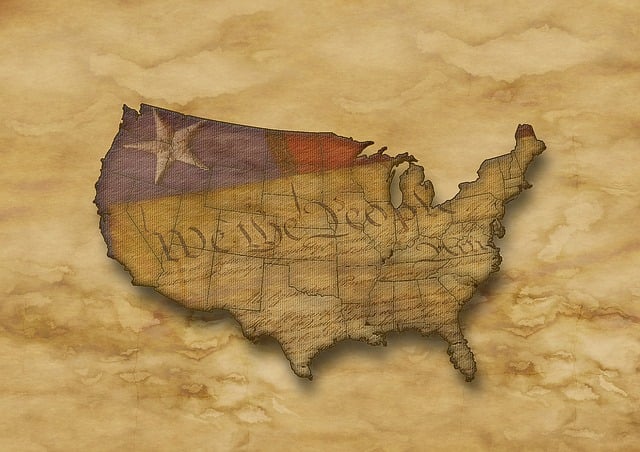
Another Preliminary Injunction in OMB Memorandum (M-25-13) Litigation
03.12.2025 | Linda J. Rosenthal, JD

”’Myths abound “… about whether, or to what extent, a tax-exempt charitable organization may jump into the political fray as each election cycle heats up.
Clearing away the fog is the goal of our special series: The Johnson Amendment: Bite-Sized Morsels for 2024 (January 24, 2024). How?: a “back-to-basics” refresher presented “in small, easily digestible portions.”
The key governing statute is Internal Revenue Code section 501(c)(3) and – specifically on this point of election-season activities – are the final 31 words. See Johnson Amendment First Morsel: The Thirty-One Words (March 12, 2024). The most common shorthand reference is “the Johnson Amendment.” Seventy years ago, it was then-Senate Minority Leader Lyndon B. Johnson, a decade before his presidency, who single-handedly drafted this rule and made sure Congress approved it at the last minute without debate.
The Johnson Amendment is an express, 100%, ban. There are serious consequences for violating it, including possible revocation of tax exemption. But the scope of this 31-word prohibition is nowhere near as broad or all-encompassing as widely believed.
Understanding the boundaries of the rule will be key for the nation’s tax-exempt charitable organizations safely navigating the next several months until November 5, 2024, while also legitimately advancing their causes and missions. Johnson Amendment Second Morsel: Escape Routes (March 31, 2024).
“[M]any people will make a rather breathtakingly broad guess,” about what’s in the Johnson Amendment, likely “based on the high anxiety-level connected with this issue.” But the precise words inserted by LBJ at the tail end of section 501(c)(3) are “not expansive at all.”
By way of quick review, this is the Johnson Amendment:
As originally enacted in 1954, it was just 27 words long. The bolded parenthetical language was added by Congress in a 1986 amendment to clarify that section 501(c)(3) organizations may neither campaign for candidates nor against them.
In the Second Morsel post, you’ll see how there is considerable wiggle room in the statutory language. The Johnson Amendment does not gobble up anything and everything that can arguably be described as “political” or related to “politics” or to “politicians.”
Whether a certain type of activity falls within or outside the scope of the Johnson-Amendment 100% ban is generally a matter of looking at the totality of the facts and circumstances, and examining them against the statutory language.
The bottom line, though, is: no “campaign” = no Johnson Amendment issue.
Quite often, fear about the reach of the Johnson Amendment extends to worry that “lobbying” may come within this prohibition.
“Lobbying,” according to the IRS website, is shorthand for “attempting to influence legislation.” “Attempting to influence legislation” is clearly and unequivocally outside the Johnson Amendment rule. (That’s not to say that 501(c)(3)s can lobby all day every day. There are restrictions. More about that, below.)
There are two reasons that we know for sure that “lobbying” is not prohibited under the Johnson Amendment.
First, there are no linguistic gymnastics by which the square peg of “lobbying” aka “attempting to influence legislation’ can squeeze into the round hole of “participating … in a political campaign.”
It’s way beyond any reasonable application of the rules of “statutory construction.” That’s “… the process of determining what a particular statute means so that a court may apply it accurately; also known as statutory interpretation …. Statutory construction begins with looking at the plain language of the statute to determine its original intent.” Whenever possible, courts apply the “usual and ordinary meanings” to the words of a statute.
Second, along with the Johnson Amendment, section 501(c)(3) includes its own distinct rule about “attempting to influence legislation.” Located just above the Johnson Amendment, it reads:
Simply put, the Johnson-Amendment ban does not apply at all to “lobbying” aka “attempting to influence legislation.” This separate – but equal – rule within 501(c)(3) makes that clear.
And it’s not unreasonable to characterize the lobbying-limits rule in 501(c)(3) as perhaps a bit weightier than the Johnson Amendment. That’s because this “attempting to influence legislation” rule predated the Johnson Amendment by at least 20 years or more. It was included in the Revenue Act of 1934, while a proffered ban on political activities was expressly rejected by those earlier lawmakers on the grounds of being “too broad.” See A History of the Tax-Exempt Sector: An SOI Perspective Statistics of Income Bulletin, Internal Revenue Service (Winter 2008) pp. 105-108.
Note that the lobbying limitation in both statutory versions – 1934 and 1954 – is a partial restriction – not a total ban.
On its website page titled “Lobbying,” the IRS presents a crisp and clear explanation: “What is “commonly known as lobbying” is “attempting to influence legislation. A 501(c)(3) organization may engage in some lobbying, but too much lobbying activity risks loss of tax-exempt status.” This concise explanation continues for a few paragraphs more, making clear how lobbying is entirely distinct from “participating or intervening … in a political campaign.”
There you go: “some” is ok, just “not too much.”
In Federal Law Protects Nonprofit Advocacy & Lobbying, the National Council of Nonprofits also helpfully confirms that “some” lobbying is allowed. “The federal government, including Congress and the Internal Revenue Service, supports not only broad advocacy but also legislative lobbying by 501(c)(3) charitable nonprofits.”
NCN mentions and links to an interesting letter response in 2000 from an IRS exempt-organizations official to the Center for Lobbying in the Public Interest. The IRS answered “basic questions about charitable nonprofits engaged in lobbying” to “make it plain as day.” According to NCN, the Center elicited the answers from the government because “[m]any nonprofits and their funders prefer to hear the words from the authority itself.”
The alternative rule – commonly referred to as the “Subsection (h) Election” was added by a 1976 Congressional amendment designed to make complying with this lobbying restriction easier and more precise than dealing with the annoyingly vague “…no substantial part ….” formula. The “expenditures test” alternative is calculated on a sliding scale of the gross income of the organization in question. These “lobbying limits” are quite generous and difficult for most organizations to exceed.
Having established that “attempting to influence legislation” aka “lobbying” is not subject to the Johnson Amendment total ban, the next step is taking a look at what activities are “legislation.”
The good news is that federal officials take a broad view of what fits into that particular escape route.
– Linda J. Rosenthal, J.D., FPLG Information & Research Director
